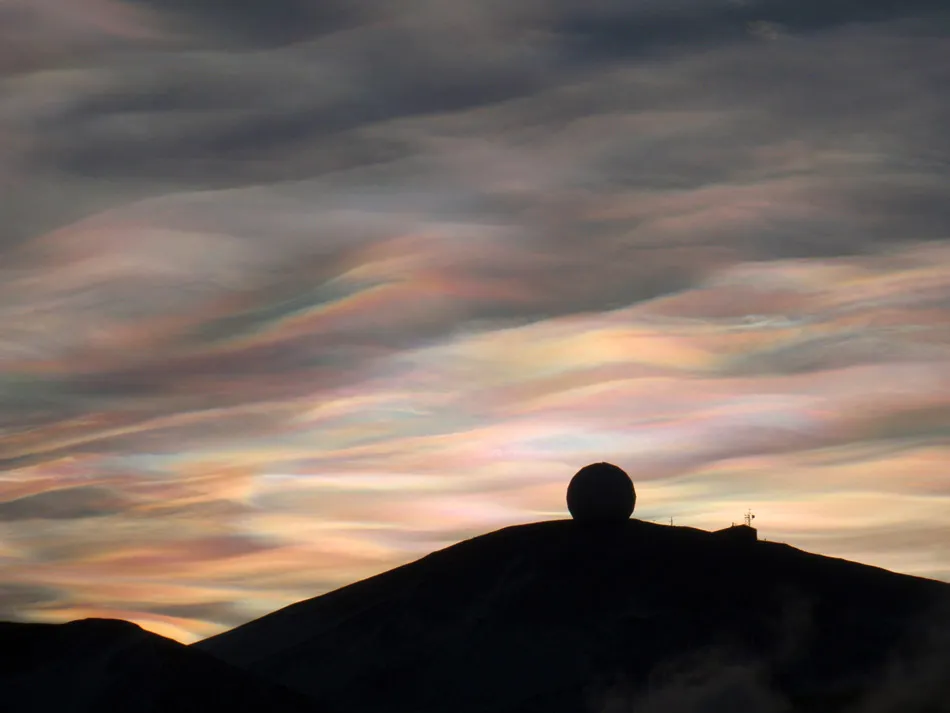Antarctic Weather Phenomena
There's a lot of weather in Antarctica, it is the coldest, windiest and highest continent, it is also a desert, these factors conspire to create lots of interesting and unusual atmospheric phenomena.
1/ Solar Pillar
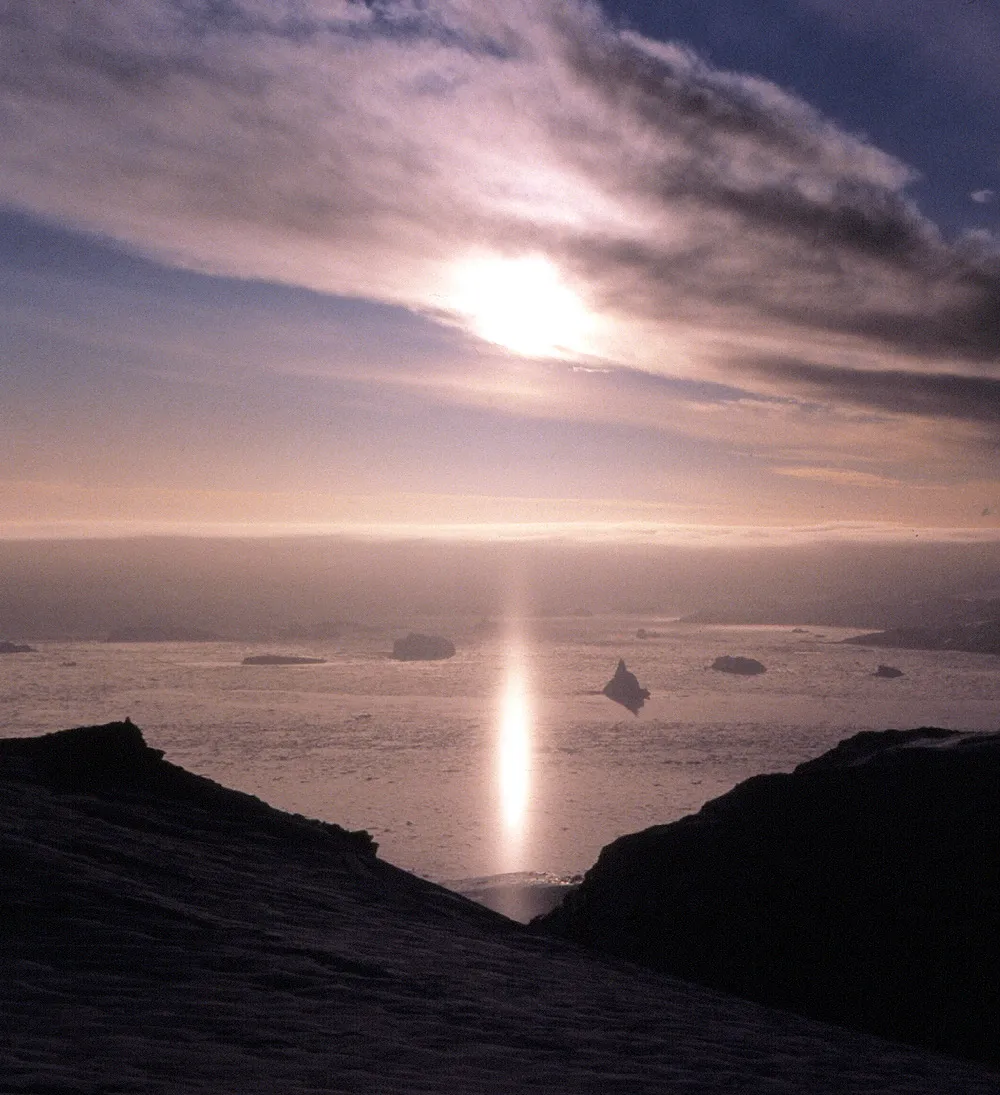
One of these is the "Solar Pillar" in the picture. The sun is reflected very strongly off tiny suspended flat ice crystals in the air which are oriented at or almost horizontally, so that the reflection is almost as bright as the sun itself. Like a rainbow, this sight depends on the viewing angle, where the light is coming from and where the observer is standing. The pillar appears to move when the observer moves, but always remains directly below the sun because the ice crystals are found throughout the air but only act as mirrors for the sun at the correct viewing angle.
2/ +100°C water meets -32°C air
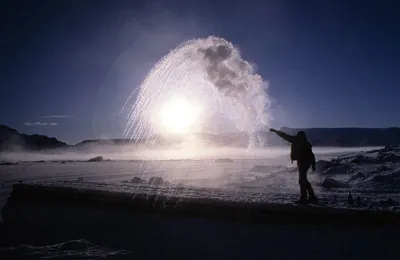
As the +100°C water meets the cold (in this case -32°C) air, it instantly vaporizes. Most of it is turned into a cloud of steam that drifts gently away and some of the droplets that stay together are instantly turned into small pieces of ice that can be seen streaking down towards the bottom left in this photograph.
It's very weird to throw water into the air but none of it ever actually landing. Also seen in this picture is a solar halo around the sun formed by the ice crystals in the air.
3/ Heavy seas across Drake Passage

It is the place where not only are there high and strong winds that blow most of the time, but where the "Circumpolar Current" is squeezed through its narrowest gap. This is a Westerly current that flows around Antarctica powered by Antarctic winds. It flows at the rate of around 140 million cubic metres (tonnes) of water per second, the equivalent of 5000 Amazon rivers or four times the size of the Gulf Stream.
The Drake passage has been described as the roughest stretch of water in the world, it is what must be navigated when rounding Cape Horn and Tierra del Fuego - the southern most tip of South America. To reach the Antarctic peninsula it is necessary to traverse this stretch of water at right angles to the current flow. The result is often very lumpy seas indeed as seen in this shot where HMS Endurance is making the crossing. We were banned from going out on deck (for obvious reasons) I took this picture through a forward facing window.
At other times however, it can be very flat and calm.
4/ Mirage - Fata Morgana

Air of different temperatures refracts (bends) light in different ways, the same phenomena is responsible for "heat haze" as seen above a road on a very hot day.
It is the difference in temperature that is important and in this case it is causing a reflection downwards just above the level of the horizon so that objects on the horizon appear to be floating above the sea or ice rather than resting on it.
5/ Clouds and skies
I once met someone (admittedly a meteorologist) who said that his main reason for going to the Antarctic was because of the amazing skies and clouds he had seen in pictures.
Who can blame him?. The clear (almost) pollution free air and wide open vistas unencumbered by trees, buildings or other clutter give panoramas of the sky that stretch for dizzying distances.
The clouds in the right-hand picture below are called nacreous or mother-of-pearl clouds, they are extremely high flying clouds lit up by the sun still after the sun is below the horizon, either at sunrise or sunset.
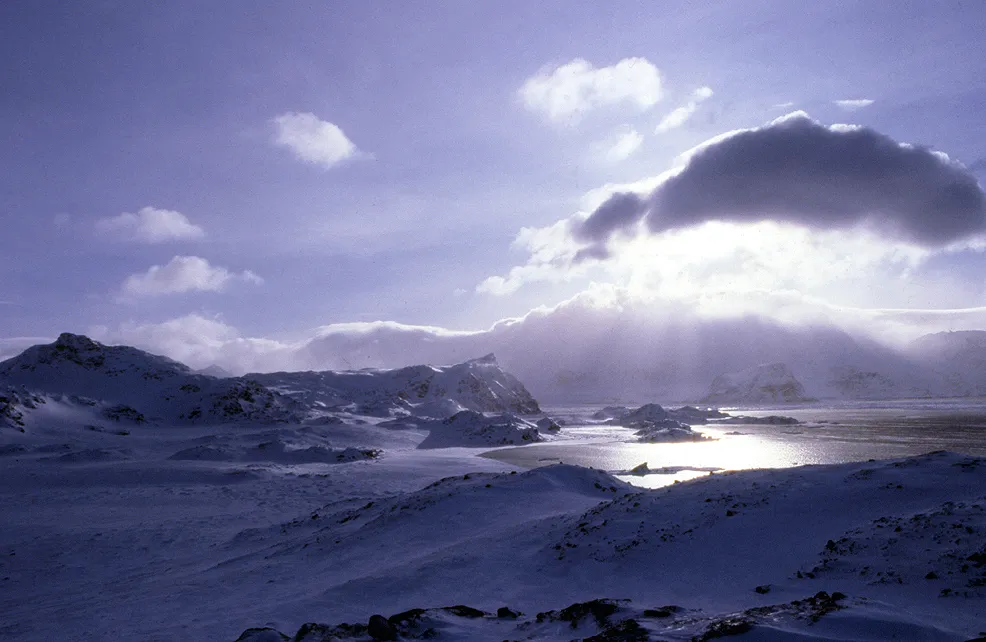
6/ Solar halo
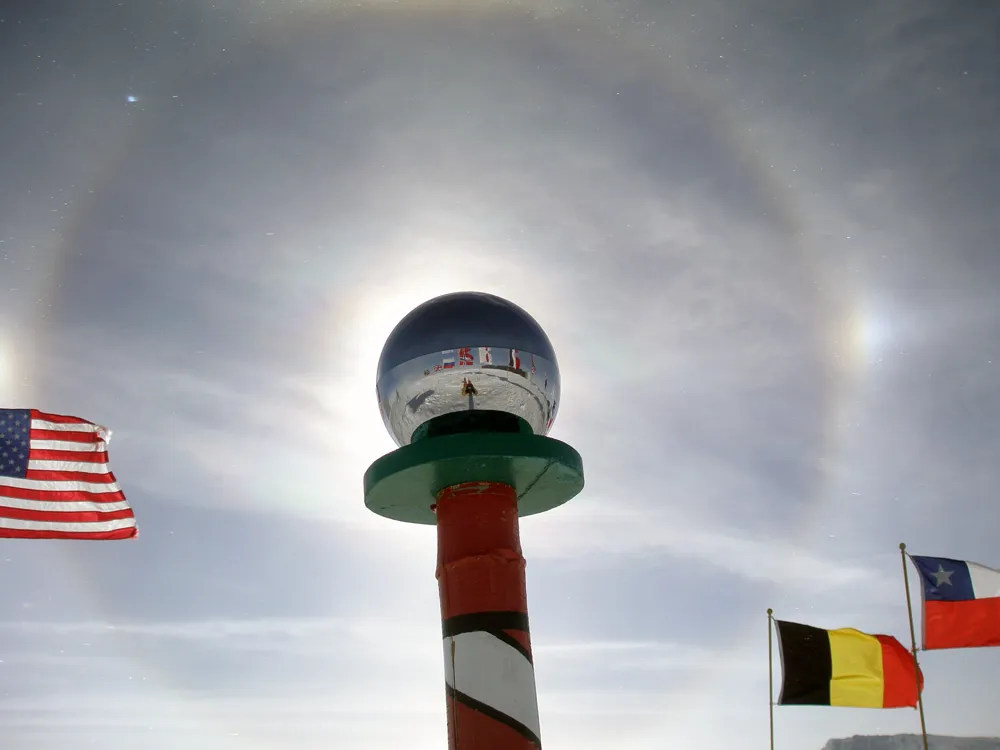
In this case, ice crystals are reflecting a circle or halo around the sun which is here directly behind the South Pole marker (the same can happen with the moon and even street lights). Sometimes there appear to be parts of other circles touching the main circle at the 12, 3, 6 and 9 o'clock positions, these cause brighter spots which are known as sun dogs.
Such phenomena are usually encountered in the winter rather than summer when lower temperatures make such occurrences more likely.
The solar halo is at the south pole marked by a striped barber pole topped with a glass sphere. This marker pole is moved every year as it drifts away from the exact spot with the glacial movement of the polar ice sheet.
7/ -2°C water meets -32°C air
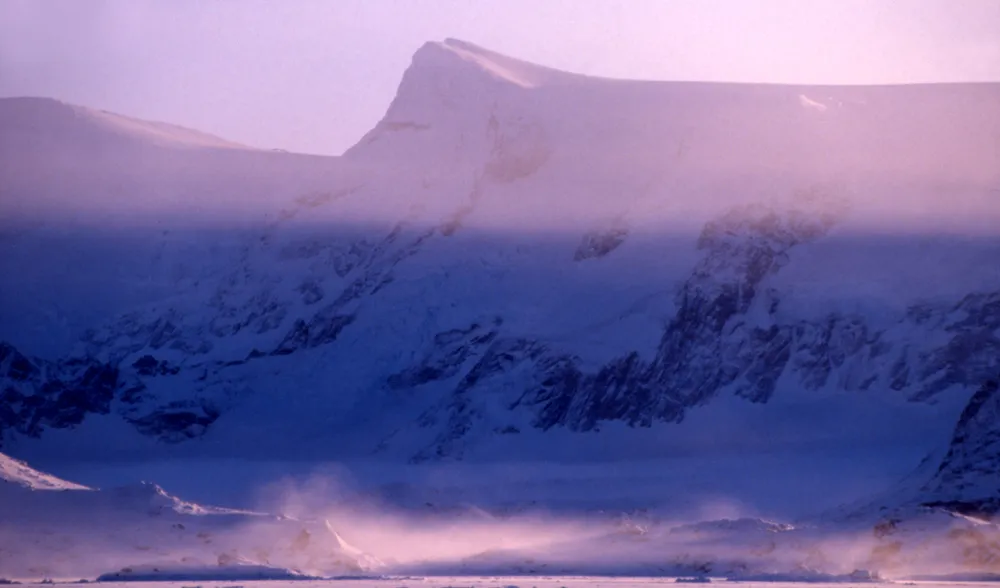
In this picture, water is being exposed at the "tide-cracks" that form around offshore rocks and small islands when the tide rises and falls with continuous sea-ice present. The ice cracks with this movement and as it does exposes an amount of open water to the air.
Antarctic sea water varies between about +2°C and -2°C over the course of a year, so here the exposed sea surface is more than 30°C warmer than the surrounding air. The result is that it begins to turn to a vapour. The sunshine on this day serves to make it more visible and different temperature layers in the air cause it to form into a layer above the clearer air close to the ice surface.
8/ Fohn bank
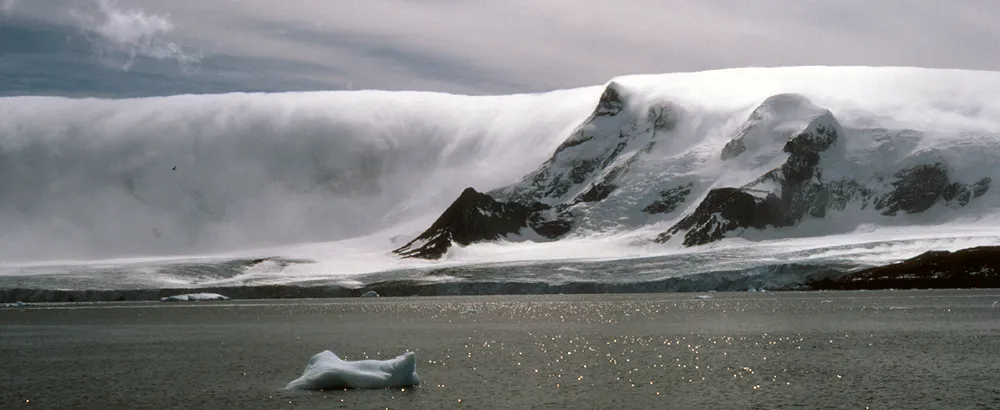
As the warm (relative to the ice and rock) wind blows across the land, it causes snow and ice to sublime. That is to turn directly from a solid to a gas without passing through a liquid phase, so causing the cloud layer that can be seen. The overall effect as seen from a distance is that the land is covered by a very large blanket. The gross contours can be seen through the cloud layer, but all of the finer detail is obscured. Such winds (which have other names in other parts of the world, this is a German term from the Alps) are very dry and can quickly lead to a loss of snow and ice cover.

